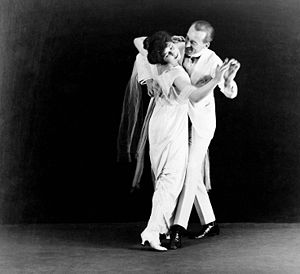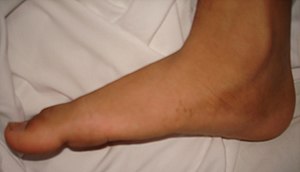 |
| (Photo credit: Wikipedia) |
Aside from a night with great music and friends, did you know ballroom dancing is a great workout to trim up your waistline as well? Whether it’s the waltz, jive, salsa or tango, dancing provides some true benefits. Most styles involve muscles from head to toe and every muscle is toned and strengthened while dancing. Ballroom dancing specifically targets the core muscles in the abdomen and the back as many styles require partner work that involves dips and lifts.
Any exercise that has your heart pumping for thirty to forty minutes is going to improve your cardiovascular health and helps to burn calories. A thirty-minute session of dancing can burn up to 400 calories. Burning calories often equals weight loss and can mean a shrinking waistline! Celebrities that have trained on Dancing with the Stars such as Kirstie Alley and Kelly Osbourne are proof of ballroom’s benefits.
The U.S Department of Health and Human Services suggests that adults get in at least 30 minutes a day of exercise to maintain good health. If you are tired of the same old routine, find a friend, get over your fears and try a ballroom class! Dr. Tina Boucher at Central Connecticut Footcare Center can help keep your feet safe and healthy along the way. If you have any foot pain or discomfort while dancing, don’t hesitate to contact us for help. Call our office in Meriden, CT at (203) 238-3668 to make an appointment today!

















